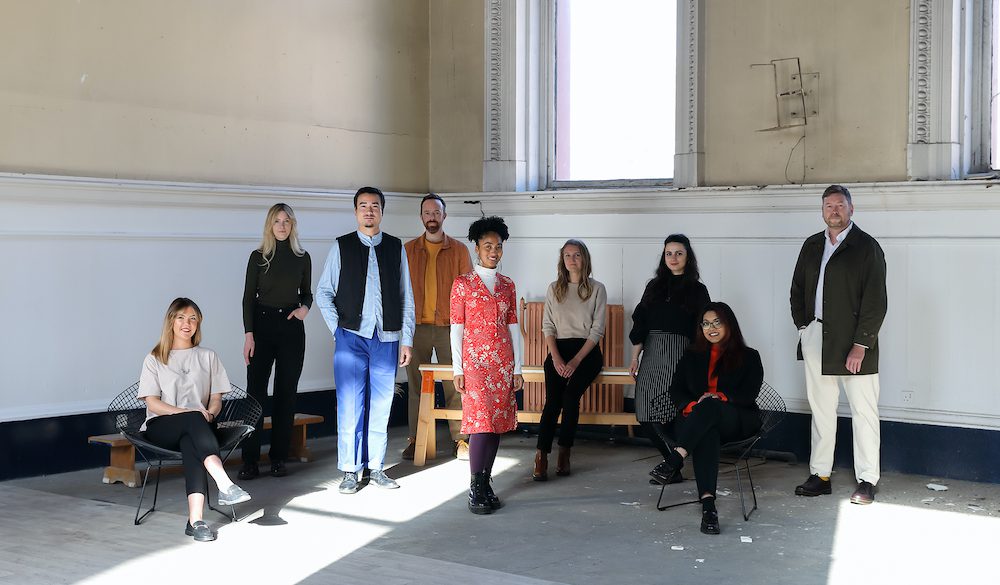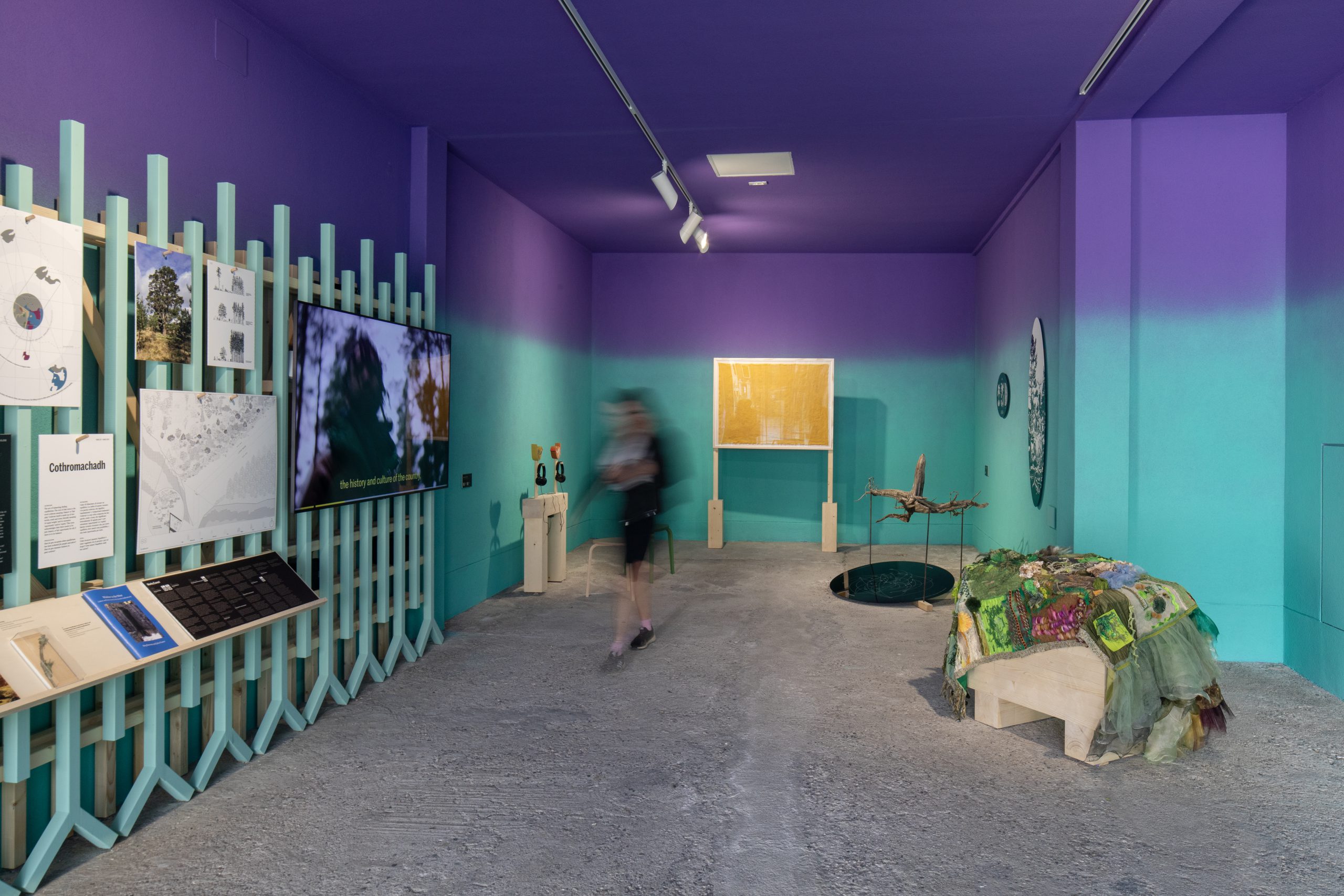LET’S START with a word: opportunity. Scotland’s chance to participate in the Venice Architecture Biennale, the biggest and most prestigious festival of architecture in the world. In the canal-side venue used by the Scotland + Venice Partnership since 2019, close to the Biennale’s main spaces, the show is ideally placed to catch visitors from all over the world.
A Fragile Correspondence begins with issues of land and language, and goes on to touch on climate change, exploitation, stewardship, community and nature. Visitors will encounter a 4,000-year-old pine tree, words from the lost Orcadian language of Norn, and 32 birch logs from the site of a former steelworks.
What you won’t encounter is anything that looks like a building design, and this is very largely the case throughout the 2023 Biennale. Andy Summers, co-founder and co-director of Architecture Fringe, and one of the show’s nine curators, says: “Like a lot of the work in Venice this year, we’re trying to widen and explode what architecture is. It’s not just about designing and buildings, it’s about people and systems, landscape, ecology and materials.”
Two more words: decolonisation and decarbonisation, the words prioritised by Lesley Lokko, the Scot-Ghanaian curator of this year’s Biennale. Pushing the event in a radical new direction, she invited participants to think hard about what it means to build buildings in an era of climate crisis, and to ask whose voices were being heard around the architecture table.
In her show, The Laboratory of the Future, at the Arsenale and Giardini, more than half of those taking part are from Africa or the African diaspora, there is a 50:50 gender balance, and a raft of practitioners under 40. Scottish practice, Skye-based Dualchas, are part of the Arsenale show as an example of architecture inspired by local landscapes and culture. But, for the most part this is architecture are installation art, problem-solving, provocation, activism and only occasionally buildings.
Many of the ideas in the wider Biennale can be found in the Scotland + Venice exhibition, curated by three groups: Architecture Fringe, a volunteer-led organisation which explores architecture and its impact on public life; ~ism, a magazine described as “a platform for open discussion about the built environment”, and /other, a collective of architects of colour who are recent graduates of Glasgow’s Mackintosh School of Architecture. These groups, in turn, drew on a much larger team of artists and collaborators to create the work in the show.
“People do ask us how nine people can curate anything,” laughs Mia Pinder-Hussein of /other. However, the project has been a deep collaboration in which each person played to their strengths. Kristina Enberg, designer-in-chief of ~ism, describes it as “a continuous dialogue… a discussion that started amongst ourselves that has slowly expanded when we started to collaborate with more people. It isn’t this one narrative saying one truth, it’s several truths which are all valid. It’s diversifying the narrative, not just having one which overpowers all the others.”
Discussion gradually homed in on three areas of Scotland, three topographies: Loch Ness (highland), Orkney (island) and Ravenscraig near Motherwell (lowland). For each, the team identified two words, an issue to be explored and a proposal of another way of looking. Each group took “stewardship” (they are very clear the word is not “ownership”) of one of the areas.
The show opens with /other’s work on Loch Ness, where the issue is “extraction”. Industrial forest on one side of the loch speaks of the way resources from the Highlands have been exploited to serve the interests of industry and landed power. Community-managed, and more ecologically diverse, forest at Abriachan on the other side speaks of another way forward, of the Gaelic concept of “cothromachadh”, a balance between the interests of humans and nature.
Mia Pinder-Hussein says: “I think we were interested in the land being something that we work with, rather than being something we just take from. Architecture can be guilty of that, we never really ask these questions about how the materials get to us. For everything that we build upwards, something is being taken from somewhere else.”
The Loch Ness section includes work by Dr Mairi McFadyen, Raghnaid Sandilands and by Scots-Nigerian artist and architect Dele Adeyemo (whose work is also in the Arsenale). He points to the ways in which romanticised views of Highland “wilderness” have obscured a history of displacement and dispossession, how the wealth acquired in the slave trade reshaped parts of Scotland into sporting playgrounds for the rich.
In Orkney (words: “fragment” and “adapt”) the team at ~ism have focussed on the islands’ long history of occupation (some 8,500 years), and how they have adapted to changing populations, languages and climate. Working with collaborators including Dr Donna Heddle, director of Northern Studies at UHI, and artist and archaeologist Aaron McCarthy, they pose the question: How might we learn to work with evolving climate change instead of against it?
At Ravenscraig (words: “erase” and “saunt”), the largest hot strip steel mill in Western Europe until it closed in 1992, the issues are different. The vast site of the former “Steelopolis” has now had 30 years of being left to nature, and is ecologically diverse, even hosting some rare plant species. A film essay by Amanda Thomson, and photography and sculpture by Frank McElhinney and Hamshya Rajkumar help bring it to life.
“Saunt” is an old word for disappearance which has ghostly echoes, a place which retains its memories of the past, rather than erasing it. Andy Summers of Architecture Fringe, who worked on this section says: “What we are trying to do is see the landscape in its contemporary form, not going back into nostalgia or jumping far into the future. As it is, it is fascinating, incredible.
“We’re thinking about words we use, day to day, like ‘development’. What does that mean for Ravenscraig? Not to build housing, a roundabout with a McDonalds, but to develop the site as an asset for the community. Our provocation is to transfer the land to the town of Motherwell through the Common Good Act of 1491, which is still in use, so it can be an asset for the people who live there.”
With its mix of reflection, provocation and creativity, A Fragile Correspondence resonates with many of the presentations by other countries, in both the “official” and “collateral” programmes. Many are looking at issues and possible solutions: Denmark at rising sea levels, Canada at the crisis in affordable housing, the USA at plastics.
Germany has gathered and catalogued the disposable infrastructure from last year’s art biennale and set up workshops where it can be repurposed. Belgium investigates mushrooms as a sustainable building material. Finland devotes its small pavilion to the benefits of the composting toilet.
Some more words, then, to conclude: passion, ingenuity, de-centralisation, adaptability. A Biennale which ponders deeply what it means to be an architect at a time of climate emergency, and which offers fragile correspondences laden with hope.
Originally published in Scotland on Sunday, 9 July 2023



